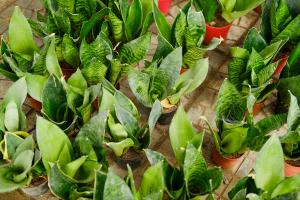How Often to Water Dying Plants
One of the most important things to keep in mind when it comes to caring for plants is to water them properly. Many plants can die if they are overwatered or underwatered, and it can sometimes be difficult to know how often to water certain plants. In this article, we will discuss how often you should water dying plants to bring them back to good health.
Assess the Situation
The first step in determining how often to water your dying plants is to assess the situation. Examine the plant carefully and look for signs of underwatering or overwatering. If the soil is dry and crumbly, the plant may be dehydrated and in need of more water. On the other hand, if the leaves are turning yellow or brown and feel mushy to the touch, the plant may be suffering from overwatering and drowning. Once you have determined the cause of the problem, you can adjust your watering schedule accordingly.
Consider the Plant's Needs
Different plants have different water requirements, so it's important to consider the specific needs of your plant when deciding how often to water it. Some plants, such as succulents, require very little water and can go for extended periods without being watered, while others, like ferns, need to be kept moist at all times. Research your plant's specific watering needs to ensure that you're giving it the right amount of water.
Use the Right Watering Technique
The way that you water your plants can also affect how often you need to water them. If you're simply pouring water onto the soil, you may be missing the plant's roots entirely, leading to underwatering. Instead, try using the "soak and dry" method, where you water the plant thoroughly until water drips from the bottom of the pot, and then allow the soil to dry out completely before watering again. This ensures that the plant's roots are getting the water they need without drowning the plant.
Consider the Environment
The environment that your plant is in can also affect how often you need to water it. If your plant is in a dry, sunny location, it will likely need to be watered more frequently than if it were in a cool, shady area. Similarly, if the air in your home is dry due to air conditioning or heating, your plant may need to be watered more often to compensate.
Conclusion
In conclusion, the key to reviving dying plants is to water them properly. By assessing the situation, considering the plant's needs, using the right watering technique, and taking the environment into account, you can determine how often to water your plant to bring it back to good health. Remember that every plant is different, so it may take some trial and error to find the right watering schedule for your particular plant. With patience and care, however, you can help your dying plant thrive once again.

 how many times do yo...
how many times do yo... how many planted tre...
how many planted tre... how many pine trees ...
how many pine trees ... how many pecan trees...
how many pecan trees... how many plants comp...
how many plants comp... how many plants can ...
how many plants can ... how many plants and ...
how many plants and ... how many pepper plan...
how many pepper plan...































